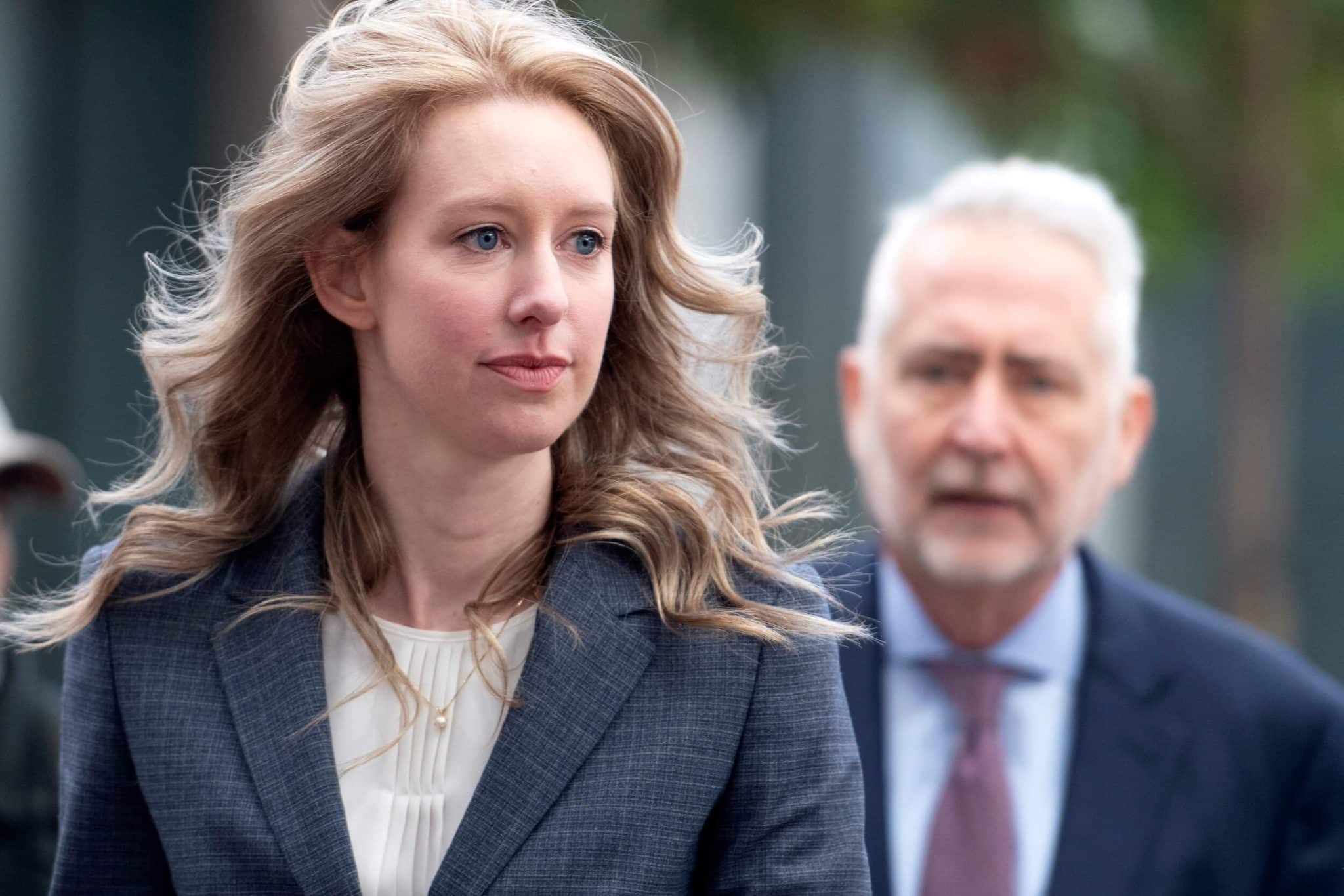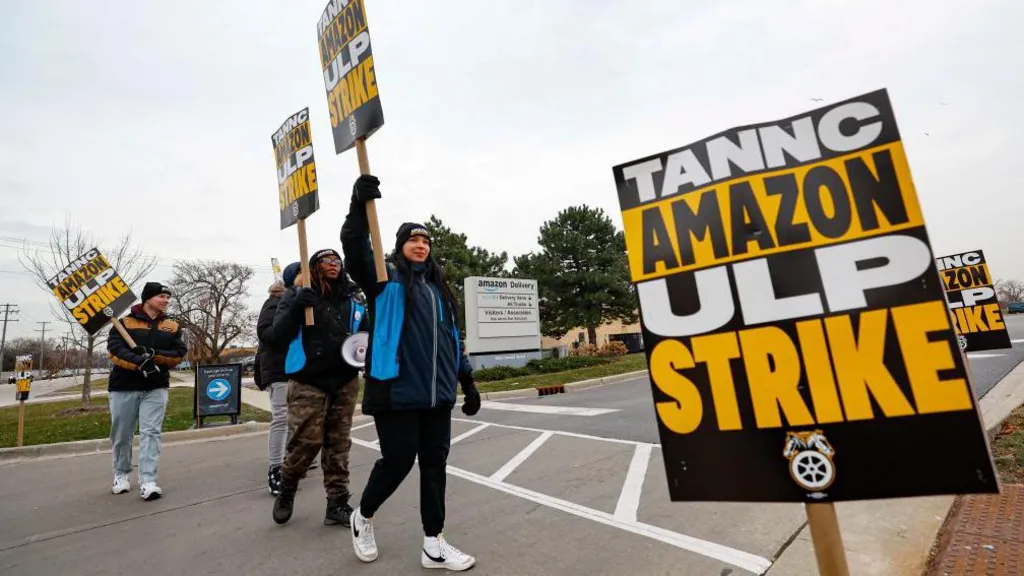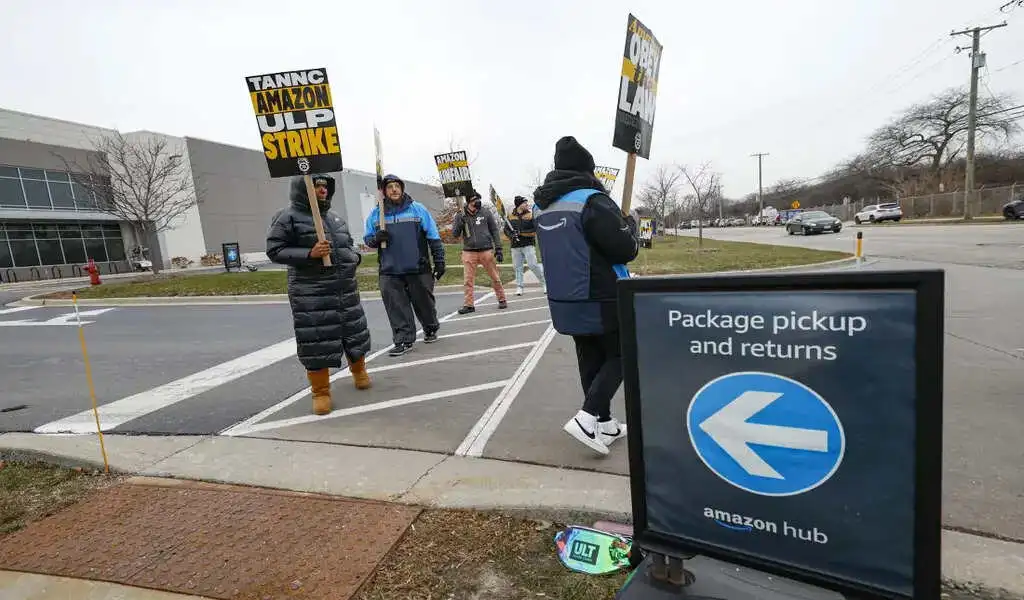Business
As Elizabeth Holmes Heads To Prison For Fraud, Many Puzzle Over Her Motives

SAN JOSE, Calif. The criminal prosecution that exposed the blood-testing scam at the heart of Elizabeth Holmes’ Theranos firm is entering its final phase as Holmes prepares to report to prison next week.
The 11-year sentence is just dessert for the starry-eyed lady who rose to the top of Silicon Valley’s business world despite the “tech bro” culture’s bias towards women, only to be revealed as a phony. Along the process, Holmes became symbolic of the obnoxious boasting that permeates the startup community.
The federal judge who oversaw her trial seems perplexed by the numerous unanswered issues regarding her motivations. And Holmes’ supporters keep asking if the sentence is proportional to the crime.
She was convicted of fraud and conspiracy at the young age of 39, and it seems likely that she will be known as Silicon Valley’s Icarus.
Some of her supporters believe federal prosecutors unfairly singled her out in their pursuit of bringing down a prominent practitioner of fake-it-til-you-make-it, the tech industry’s brand of self-promotion that sometimes veers into exaggeration and blatant lies to raise money.
On May 30, Holmes will begin serving the sentence that will force her to spend time away from her two children, a son whose birth in July 2021 delayed the start of her trial and a 3-month-old girl conceived after her conviction.
Bryan, Texas, is around 100 miles (160 km) northwest of her hometown of Houston and is where she is slated to serve her time. The judge who condemned Holmes suggested the prison, but the location where she would be housed has yet to be made public.
Many people think she is dishonest and should go to jail for selling a device that, she said, could detect hundreds of diseases and other health problems with just a few drops of blood collected from a finger prick.
The criminal prosecution that exposed the blood-testing scam at the heart of Elizabeth Holmes’ Theranos firm is entering its final phase.
The technique was less effective than advertised. Instead, the results of Theranos’s tests were extremely unreliable, potentially jeopardizing patients’ lives, which is why she should be charged.
Holmes had secured over $1 billion from several sophisticated investors, including Oracle co-founder Larry Ellison and media magnate Rupert Murdoch before those lies were exposed in a series of blockbuster articles in The Wall Street Journal beginning in October 2015. She was convicted of fraud and had to pay $452 million in compensation because of the victims she defrauded.
At one time, Holmes’ Theranos investment made her a paper billionaire worth $4.5 billion. She never sold any of her shares in the company, but the trial evidence showed that she enjoyed the perks that came with her newfound celebrity and money. She and her children’s father, William “Billy” Evans, even resided in a mansion in Silicon Valley while the trial was going on.
Trial evidence recording Holmes’ efforts to prevent the Journal’s research from being published lent credence to the allegation that she was running an extensive fraud. John Carreyrou, the reporter who broke the blockbuster story, attended the trial because of the pressure from the campaign. He sat directly in front of Holmes as she testified.
Holmes approved surveillance aimed at intimidating employees who uncovered the vulnerabilities in Theranos’ blood testing system. Tyler Shultz, the grandson of former Secretary of State George Shultz, was one of the whistleblowers Holmes met and persuaded to join the Theranos board.
Alex Shultz revealed at his daughter’s sentencing that Tyler Shultz slept with a knife beneath his pillow because he was terrified of Holmes’ attempts to silence him.
Holmes’ defenders insist she never intended any harm and was made a scapegoat by the FBI and DOJ. They claim she is just as guilty of using hyperbolic advertising as Elon Musk, another prominent tech entrepreneur who has constantly exaggerated the capabilities of Tesla’s self-driving cars.
Some have argued that Holmes was treated unfairly because she was a woman and because her trial transformed her into a modern-day Hester Prynne, the protagonist of the 1850 classic “The Scarlet Letter.”
Throughout seven days of often compelling testimony in her defense, Holmes doggedly maintained her innocence, causing thousands to queue shortly after midnight to acquire one of the few dozen seats in the San Jose courtroom.
The criminal prosecution that exposed the blood-testing scam at the heart of Elizabeth Holmes’ Theranos firm is entering its final phase.
While attending Stanford University, Holmes was the victim of sexual assault, an experience she had never fully recovered. She said that her former lover and Theranos conspirator, Ramesh “Sunny” Balwani, had subjected her to a cycle of emotional and sexual abuse and that his oppressive control had clouded her judgment.
Jeffrey Coopersmith, Balwani’s attorney, refuted the claims during the trial. Coopersmith attempted, but failed, to portray his client, Balwani, as Holmes’ pawn in the later trial.
Balwani, 57, was found guilty of fraud and conspiracy and is currently serving nearly 13 years in prison.
U.S. District Judge Edward Davila seemed as perplexed as the rest of us when it came time to sentence the pregnant Holmes in November.
“This is a fraud case where an exciting venture went forward with great expectations and hope, only to have them dashed by untruth, misrepresentations, hubris, and plain lies,” Davila bemoaned as Holmes stood before him. “I suppose we step back and look at this, and we think, what is the pathology of fraud?”
The judge also recalled when Silicon Valley was primarily orchards planted by immigrants. That was before Palo Alto, where Theranos is headquartered, gave way to the tech boom in the late 1930s, when William Hewlett and David Packard launched the corporation that would bear their names in a one-car garage.
You’ll remember the incredible innovation of those two men in that modest garage,” Davila told the attentive courtroom. “No flashy cars or opulent lifestyle, just a commitment to doing good, honest work for the benefit of others. And that, I can only hope, will be Silicon Valley’s lasting legacy and standard operating procedure.
SOURCE – (AP)
Business
Amazon Strike Called By Teamsters Union 10,000 Walkout

An Amazon strike has hit facilities in the United States in an effort by the Teamsters union to pressure the corporation for a labour agreement during a peak shopping season.
The Teamsters union told the Associated Press that Amazon delivery drivers at seven facilities in the United States walked off the job on Thursday after the firm failed to discuss a labour contract.
According to the union, Amazon employees in Teamsters union jackets were protesting at “hundreds” of additional Amazon facilities, which the union billed as the “largest strike” in US history involving the company.
The corporation, which employs over 800,000 people in its US delivery network, stated that its services will be unaffected.
It was unclear how many people, including members of Germany’s United Services Union, participated in Thursday’s demonstration. The Teamsters union reported that thousands of Amazon employees were implicated in the United States.
Amazon Strike at 10 Locations
Overall, the group claims to represent “nearly 10,000” Amazon strikers, having signed up thousands of people at roughly ten locations across the country, many of whom have joined in recent months.
The organization has claimed recognition from Amazon going on strike, claiming the firm illegally neglected its obligation to bargain collectively over salary and working conditions.
The Teamsters is a long-standing US union with nearly one million members. It is well-known for securing lucrative contracts for its members at companies like delivery behemoth UPS.
Most of the Teamsters’ Amazon campaigns have concerned drivers working for third-party delivery companies that partner with the tech behemoth.
Amazon denies that it is liable as an employer in those circumstances, which is a point of legal contention. In at least one case, labour officials have taken a preliminary stance in favour of the union.
Stalled Contract Negotiations
Amazon employees at a major warehouse on Staten Island in New York have also chosen to join the Teamsters. Their warehouse is the only Amazon facility in the United States where labour officials have formally recognized a union win.
However, the Amazon strike is because contract negotiations have not progressed since the 2022 vote. It was not one of the areas scheduled to go on strike on Thursday.
Amazon, one of the largest employers in the United States, has long received criticism for its working conditions and has been the target of activists seeking to gain traction among its employees.
Related News:
Amazon Releases Nova, a Fresh Set of Multimodal AI Models.
Business
Amazon Encounters Numerous Strikes As Unions Aim At The Holiday Shopping Surge.

(VOR News) – Thousands of Amazon employees at various sites across the country were scheduled to go on strike on Thursday in an effort by the Teamsters union to pressure the retail behemoth to acknowledge its unionised workers in the United States.
The walkout is expected to concentrate on seven Amazon locations across the country during the holiday purchasing surge and may be the most significant union action against Amazon in the nation’s history.
The business announced on Thursday morning that there had been no effect on operations. It also stated that it is “continuing to concentrate on fulfilling customers’ holiday orders.”
The International Brotherhood of Teamsters maintains that it represents more than 10,000 Amazon employees and contractors in aviation centres, warehouses, and delivery centres.
Amazon has refused to acknowledge the union for many years.
The retail giant, which employs approximately 1.5 million individuals, excludes contractors and part-timers. A strike has been initiated by delivery couriers and warehouse employees at seven distinct locations in order to exert pressure on the company to negotiate a collective bargaining agreement that would encompass modifications to compensation, amenities, and working conditions.
Picketing was intended for New York, Atlanta, Los Angeles, San Francisco, and Skokie, Illinois.
Also, the Teamsters assert that they are establishing picket lines at “hundreds” of additional warehouses and delivery centres by encouraging non-unionized workers to picket under U.S. labour law, which protects workers’ ability to take collective action to further their interests.
“Amazon workers are exercising their power,” Randy Korgan stated to NPR.
“They now realise there is a pathway to take on a corporate giant like this – and that they hold the power.” Amazon responds by accusing the Teamsters of fabricating information regarding the strikes, asserting that the participants are “entirely” outsiders rather than employees or subcontractors of the corporation.
Amazon spokesperson Kelly Nantel stated that “the reality is that they were unable to secure sufficient support from our employees and partners and have invited external parties to harass and intimidate our team.” For more than a year, the Teamsters have been intentionally misleading the public by claiming to represent “thousands of employees and drivers.” They do not.
The Teamsters did not provide a specific duration for the strike; however, they informed NPR that it would extend beyond one day. Workers would receive $1,000 per week in strike money, as per the union.
Teamsters President Sean O’Brien issued a statement in which he stated, “If your package is delayed during the holidays, you can attribute it to Amazon’s insatiable greed.” We established a firm deadline for Amazon to attend the meeting and treat our members equitably. They disregarded it.
The Teamsters granted until December 15 to convene with its unionised employees and develop a collective bargaining agreement.
Amazon has opposed all unionisation efforts in court, asserting that unions were not advantageous to its employees and emphasising the compensation and benefits that the organisation currently provides.
Amazon has been accused of discriminatory labour practices on numerous occasions, including the termination of labour organisers. Furthermore, it has disputed its official status as a contract employer.
Teamsters organize Amazon delivery couriers and other employees.
In June, Amazon established its first unionised warehouse in Staten Island, New York, two years after making history by voting to join the fledgling Amazon Labour Union, which is also affiliated with the Teamsters.
The union is one of the most influential in the United States and Canada, with 1.3 million members. On Thursday, the German United Services Union declared that Amazon employees in Germany would participate in a strike in conjunction with their American counterparts.
In the past, Amazon has experienced demonstrations in Germany and Spain that were related to the holiday season in order to advocate for improved wages and working conditions.
“The holiday season has arrived.” Delivery is anticipated. Patricia Campos-Medina, the executive director of Cornell University’s Worker Institute, asserts that “this is the moment in which workers have control over the supply chain.”
The Teamsters have reported that Amazon’s profits have increased both during and after the pandemic. The corporation is currently valued at over $2.3 trillion, with net income of $15 billion in the most recent quarter alone. It is the second-largest private employer in the United States, following Walmart.
SOURCE: NPR
SEE ALSO:
SoftBank Is Courting Trump With a Proposal To Invest $100 Billion in AI.
TVA News Montreal Becomes Most-Watched News Source in Quebec
Business
Crown Royal Canadian Whisky Launches 12 Year Reserve Blended

If you enjoy Crown Royal Canadian whisky, the company has announced the launch of a new expression, which will join its lineup of famous sipping whiskies.
As the name implies, Crown Royal Reserve Aged 12 Years Blended Canadian Whisky is a blend of whiskies selected by Crown Royal’s master blenders. Each had been maturing for at least twelve years.
Crown Royal Canadian whisky is a robust, drinkable whisky with flavours of dried fruits, roasted vanilla beans, cinnamon candy, and baking spices. It all culminates with a warming, lingering, spicy finish that leaves you wanting more. It’s subtle and robust enough to drink neat or on the rocks.
“Crown Royal Reserve Aged 12 Years stays true to the tradition of the original Crown Royal Reserve offering while elevating the flavour profile with more pronounced fruity notes,” stated Mark Balkenende, Master Blender of Crown Royal, in a press statement.
“This expression enhances what makes Reserve unique within the Crown Royal portfolio, now featuring the exciting addition of an age statement that provides a more elevated experience for our consumers.”
This 80-proof sipping whisky will be available at select locations in the United States starting this month for a suggested retail price of $49.99. You’ll want to try this unique taste if you enjoy blended Crown Royal Canadian whisky.
About Crown Royal Canadian Whisky
The post-Crown Royal will release a new 12-year-old blended whisky that appeared first in The Manual.
Crown Royal Canadian Whiskey is a classic loved for its smooth taste and rich history. First crafted in 1939 to honour King George VI and Queen Elizabeth’s visit to Canada, this whisky has built a lasting reputation.
Made in Gimli, Manitoba, it has a unique flavour from blending 50 whiskies. It offers a balanced and approachable profile with notes of vanilla, caramel, and oak.
Whether enjoyed neat, on the rocks, or in cocktails, Crown Royal stands out as a top choice for whisky fans. The signature purple bag protects the bottle and is a recognizable symbol. Crown Royal continues representing Canadian quality and pride in the global whisky scene.
Nestled along the western side of Lake Winnipeg in Manitoba is the little town of Gimli, where a committed group of professionals devote their time and love to the production of Crown Royal Fine De Luxe Blended Canadian Whisky.
As proud stewards, these men and women carry out the same process that generations of Crown Royal employees have done before them, demonstrating that each bottle of Crown Royal Fine De Luxe Blended Canadian Whisky contains a lifetime of expertise.
Related News:
Taylor Port Launches Sentinels Vintage Port
-
Politics3 weeks ago
Miller Expects 4.9 Million Foreigners to Leave Canada Voluntarily
-
News3 weeks ago
Nolinor Boeing 737 Crash Lands in Montreal
-
News2 weeks ago
“Shocking Video” Vancouver Police Shoot Armed Suspect 10 Times
-
Tech3 weeks ago
Increasing its Stake in OpenAI by $1.5 Billion is a Possibility for SoftBank.
-
News4 weeks ago
Facebook Securities Fraud Case Dropped
-
Health4 weeks ago
A Canadian Teenager’s Bird Flu Virus Has Mutations
























